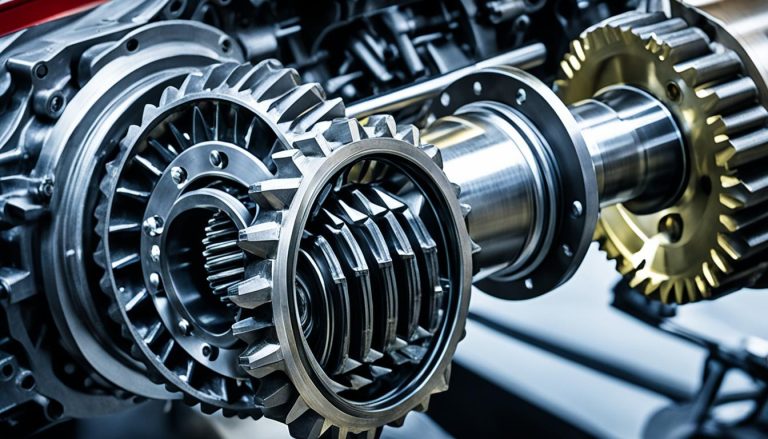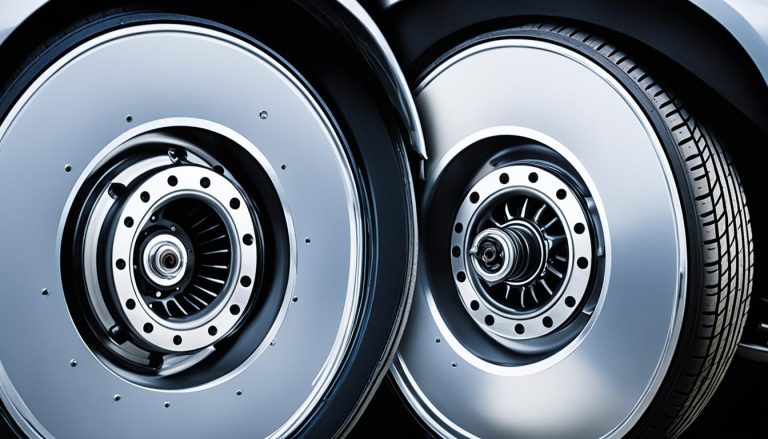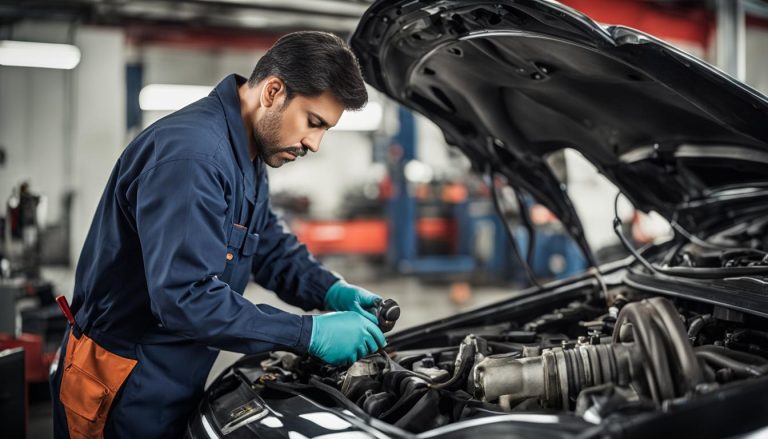Ford F-150 Limited Slip Diff Issues & Fixes
If you own a Ford F-150, you might be no stranger to the nuances of its limited slip differential. Even in such a robust vehicle, some drivers have encountered Ford F-150 limited slip differential problems. You might notice unusual vibrations in the rear when making turns from a stop, a sign often attributed to the limited slip diff acting up. Don’t worry though, because troubleshooting Ford F-150 limited slip differential issues doesn’t have to be daunting. These problems, which typically arise between 17,000 and 53,000 miles, can be often traced back to the clutch packs. They may need a replacement to get your F-150 running smoothly again.
It’s equally crucial to zero in on the small details, such as ensuring the use of the right LSD-friendly fluid with proper friction modifiers. This step is paramount for the health of your differential, especially if you’re regularly towing heavy loads. Even more, consider the pro tip of how to fix Ford F-150 limited slip differential problems — soaking new clutch plates in transmission fluid overnight before installation could potentially extend their lifespan and thus, save you from future headaches.
Key Takeaways
- Recognize vibrations in the rear end as a potential sign of Ford F-150 limited slip differential problems.
- Clutch pack issues often require a timely replacement to avoid further differential damage.
- Utilizing the correct LSD-specific fluid and friction modifiers is essential for proper maintenance.
- Soaking new clutch plates in transmission fluid before installation can help ensure longer life.
- Regular fluid changes are critical, particularly for Ford F-150s that engage in regular towing.
Ford F-150 Limited Slip Differential Problems: Common Complaints and Causes
As a respected owner of the iconic Ford F-150, understanding the intricacies of your truck’s limited slip differential is vital to ensuring its longevity and performance. While the F-150 is known for its reliability and toughness, common problems with the Ford F-150 limited slip differential can arise, often detected through certain telltale signs and influenced by various factors.
Understanding Clutch Pack Failures in the F-150 Limited Slip Diff
Clutch pack failures are a prevalent issue among many Ford F-150 models. It’s characterized by a distinct vibration or chattering when turning, especially when taking off from a stop. This nuisance can often be traced back to the limited slip differential’s clutch packs. An essential part of Ford F-150 limited slip differential maintenance is inspecting these packs for wear and replacing them as needed. Additionally, factors like taller tires may exacerbate this concrete concern.
Be alert to the signs of a failing Ford F-150 limited slip differential, such as lack of traction in slippery conditions, as these can reflect imminent clutch pack issues.
Impacts of Improper Fluid and Maintenance on Differential Performance
The lifeblood of your limited slip differential is none other than the proper differential fluid. Using the correct lubrication not only ensures smooth operation but also protects against premature wear. Furthermore, inadequate maintenance practices, from neglecting fluid changes to skipping regular inspections, might spell disaster for the differential’s inner workings.
Routine maintenance should be embraced not as a chore, but as a safeguard for your differential’s health and performance.
Environmental Factors Leading to Limited Slip Differential Malfunctions
Environmental adversaries like moisture can stealthily compromise your differential by causing rust and reducing lubrication efficacy. Such conditions might result in the dreaded chattering sound during turns, a sign that cannot be ignored. It’s wise to consider these factors as part of your preventative care routine to ensure your Ford F-150 runs smoothly for miles to come.
Let’s consolidate the facts in a table to better understand the common problems and their respective preventative measures:
| Common Differential Problem | Possible Cause | Preventative Measure |
|---|---|---|
| Vibration/Chattering During Turns | Worn Clutch Packs | Regular Inspection and Replacement |
| Lack of Traction | Incorrect Fluid/Low Fluid Level | Use Specified LSD Fluid; Maintain Proper Levels |
| Chattering Sound in Wet Conditions | Moisture Infiltration | Inspect Seals; Keep Differential Dry |
| Accelerated Wear | Infrequent Maintenance | Adhere to Regular Maintenance Schedule |
Armed with this knowledge, you can contribute to the welfare of your Ford F-150’s limited slip differential by staying vigilant to the signs of potential problems, maintaining a meticulous care schedule, and addressing issues posthaste. After all, who doesn’t appreciate a smooth and responsive ride?
Troubleshooting Your Ford F-150 Limited Slip Differential
When you begin to notice Ford F-150 limited slip differential noise, it’s a warning signal you shouldn’t ignore. It’s crucial to address these Ford F-150 limited slip differential issues promptly to prevent further damage and potential costly repairs down the road. Let’s dive into how you can detect and diagnose these problems to keep your vehicle running smoothly.
Detecting Signs of a Failing Limited Slip Diff
Vibrations and chattering noises during turns could be a tale-tell sign that your limited slip differential is crying out for attention. Initial symptoms are often dismissed by drivers, especially when the F-150 continues to perform with both wheels turning. But remember, the more you delay, the graver the impact might be on your differential’s performance and longevity.
Diagnostic Steps to Identify Clutch Pack Issues
To begin diagnosing your differential, check the fluid type; it should be specific to limited slip differentials. Also, look for signs of moisture which may indicate a sealing problem. Below, a simple table guides you through the basic diagnostic process:
| Diagnostic Step | Action | What to Look For |
|---|---|---|
| Visual Inspection | Check under the vehicle for leaks. | Fluid on the outside of the differential housing. |
| Fluid Verification | Ensure the use of proper differential fluid. | The type and condition of the fluid—look for contamination or incorrect fluid type. |
| Maneuver Test | Perform tight circles in a safe area. | Improved smoothness suggests fluid redistribution has helped with sticking clutch packs. |
| Listen for Noises | Drive and execute turns at low speeds. | Continued noise could indicate severe clutch pack issues and the need for Ford F-150 limited slip differential repair. |
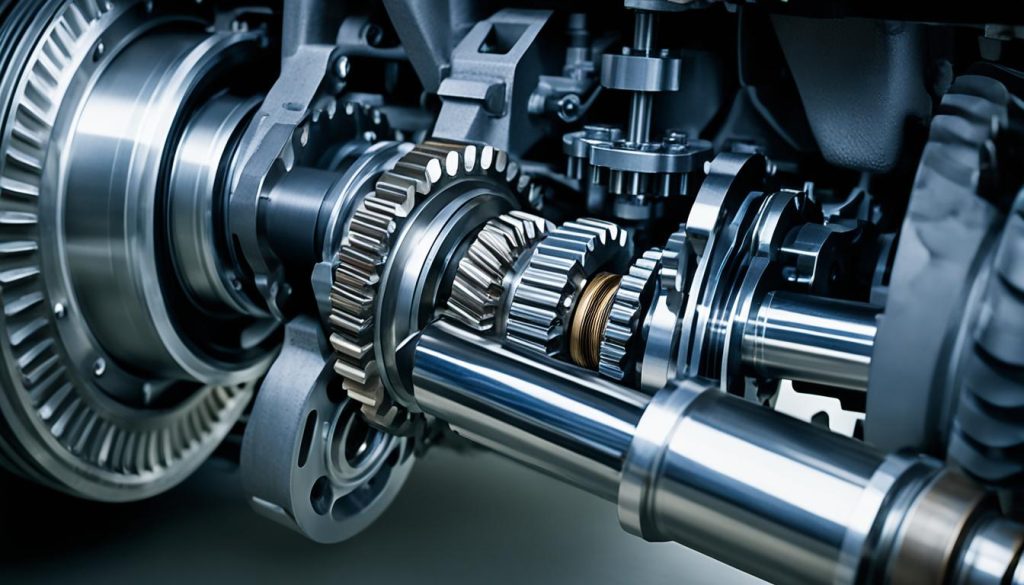
If the problems persist after performing these steps, it’s likely time to seek professional assistance for your Ford F-150. Early intervention can save you from the hassle and extra expense, and ensure that you hook up that trailer or hit the off-road trails with confidence.
Steps to Maintain Your Ford F-150 Limited Slip Differential
Ensuring your Ford F-150 limited slip differential maintenance is up to par is not just recommended; it’s vital for the longevity of your vehicle’s performance. It is the key to keeping your Ford operating smoothly, especially under tough conditions. Regular maintenance is an easy way to prevent the common issues that could lead to bigger problems down the road. Below, find a step-by-step guide to keeping your limited slip differential in top shape.
- Inspect the differential fluid level and condition regularly. If the fluid is dark or contains debris, it’s time for a change.
- Only use high-quality fluids designed for limited slip differentials, such as the Redline Limited Slip formula, to ensure proper lubrication and function.
- If you often tow or haul, increase the frequency of differential fluid changes to counter the extra stress on the system.
- When replacing clutch plates, soak the new ones in transmission fluid overnight prior to installation to improve their lifespan.
- Consider supplying your choice of oil during dealership services to assure the use of the correct lubricants.
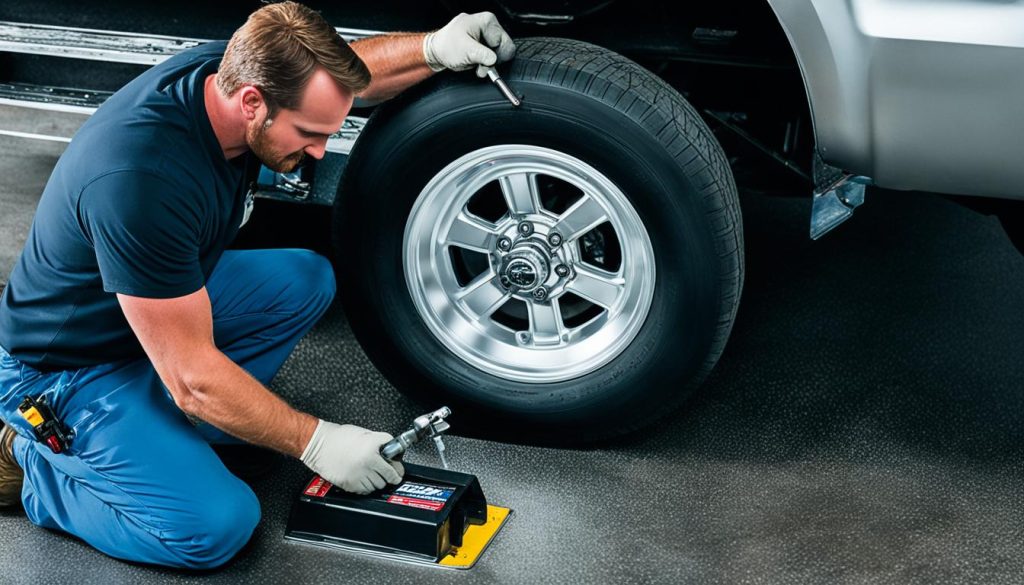
If you’re unsure about the state of your differential or when to service it, consult your owner’s manual for recommended service intervals or talk to a certified Ford service technician. Taking these proactive steps can save you time, money, and hassle, keeping your Ford F-150’s limited slip differential running smoothly for miles to come.
How to Fix Ford F-150 Limited Slip Differential Problems
If you’ve been experiencing that dreaded ford f 150 limited slip differential noise, you’re probably looking for a cure that’s both effective and practical. The crux of a smooth-running limited slip differential (LSD) lies in the lifeblood that flows within it – the right fluid and additives. Not only does using LSD-friendly options extend the life of your differential, it plays a pivotal role in mitigating noise and ensuring your F-150 performs to its utmost capability. By selecting the optimal fluid and appropriate friction modifiers, you’re on track to silencing those grumbles from beneath the chassis.
Choosing the Right Fluid and Additives for Your Limited Slip Differential
When it comes to ford f 150 limited slip differential repair, don’t skimp on the fluids. Quality matters. And this isn’t a one-size-fits-all situation; each F-150 model may require a slightly different concoction to keep your differential humming harmoniously. Seek out additives and fluids specifically designed for limited slip differentials, ensuring they have the correct friction modifiers. This will promote effective engagement of the clutch packs and lead to a discernible decrease in unwanted noise and wear.
Replacement vs. Repair: Understanding Your Options
Repair or replace? That is the question facing you and your F-150’s differential. When confronted with ford f 150 limited slip differential replacement, consider the longevity you desire from your truck and the extent of the current wear. Sometimes, a reliable repair will suffice, but for those facing repetitive problems, upgrading to a sturdier solution like the Detroit True Trac differential, which operates without clutches, is a savvy move. Be cautious about dealers that may offer quick fixes; a thorough remedy is always the best course of action to ensure lasting performance and peace of mind on the road.
FAQ
What are the most common Ford F-150 limited slip differential problems?
Common issues include vibrations or chattering in the rear end when turning from a stop, mainly caused by worn or faulty clutch packs within the differential. These problems usually appear between 17,000 to 53,000 miles.
How can I troubleshoot my Ford F-150’s limited slip differential?
Begin by checking for the use of the correct LSD-friendly fluid with the proper friction modifiers. Listen for any unusual noises and look for signs of moisture that could suggest sealing problems. Performing tight circles in a parking lot might help redistribute the conditioner within the fluid and alleviate sticking clutches.
What does the noise from a failing Ford F-150 limited slip differential sound like?
A failing limited slip differential often produces chattering or grinding noises during turns. This can point to worn clutch packs or issues with the differential fluid and additives.
How should I maintain my Ford F-150’s limited slip differential?
Regular changes with high-quality fluids like Redline Limited Slip formula are essential. Make sure to use oil that’s appropriate for limited slip differentials. If you’re engaged in activities that stress the differential, like towing, more frequent fluid changes are advisable. Also, soaking new clutch plates in transmission fluid before installation can be beneficial.
How do I fix problems with my Ford F-150 limited slip differential?
For repairs, selecting the right fluid and additives specifically designed for your model is critical. If you’re repeatedly facing clutch pack issues, consider a more permanent solution like installing a Detroit True Trac differential, which doesn’t use clutches and offers maintenance-free longevity. Decide between replacement or repair based on the extent of damage, cost, and how long you want the differential to last.
Can improper fluid contribute to limited slip differential problems?
Absolutely, using incorrect differential fluid can lead to premature clutch wear and differential failure. Always use LSD-specific fluid with the correct additives for the best performance.
What are the consequences of ignoring a failing limited slip differential?
Ignoring the symptoms of a failing differential may result in increased wear and even more significant damage to the differential system, potentially leading to a more costly repair or complete failure.
Replacement vs. repair of the Ford F-150 limited slip differential: which is the better option?
This decision is based on the current state of the differential. If the damage is extensive, replacement might be more cost-effective in the long run. Conversely, if the issue is minor and can be fixed with a simple repair, that might be the better option. Consider the costs and desired performance longevity before deciding.
Why is it important to use the correct differential fluid in a Ford F-150 limited slip differential?
The correct differential fluid contains additives that help maintain the function of the clutch packs and prevent chattering. Without the proper fluid, the differential may not operate correctly, leading to faster wear and potential failure.
How often should I change the fluid in my Ford F-150 limited slip differential?
The frequency can vary depending on how you use your truck. For standard use, follow the manufacturer’s recommended service intervals. If you regularly engage in heavy towing or off-roading, you may need to change the fluid more frequently to maintain optimal performance.

